TONIGHT'S SKY
Sun
6:14 AM
7:33 PM
Sun
Moon
7:28 PM
6:00 AM
Full
100%
Phil Harrington reports from Stellafane
Thursday, August 27, 2015 | by Michael Bakich
Recently, Contributing Editor Phil Harrington attended the 2015 Stellafane conference. Here is his account, arranged as a brief introduction and a series of captioned images. More than 1,000 people attended the 80th Stellafane convention in Springfi...
Tour the solar system: Pluto and the Kuiper Belt
Monday, August 10, 2015 | by Richard Talcott
Transcript Humanity recently captured the first close-up views of the Pluto system through the eyes of the New Horizons spacecraft. The mission was necessary because, frankly, Pluto doesn’t look like much from Earth. It glows at 14th magnitude,...
MORE ABOUT: PLUTO, KUIPER BELT
Steve Cullen joins Astronomy Foundation board
Thursday, August 27, 2015 | by David Eicher
I’m delighted to announce that Steve Cullen, who has served for the last several months as the Astronomy Foundation’s executive director, has joined the foundation’s board of directors. The Astronomy Foundation is the telescope indu...
MORE ABOUT: ASTRONOMY FOUNDATION, DAVID J. EICHER
Change Your View: Fly in July
Friday, July 10, 2015 | by Celestron
Show us just how FLY you can be this July! Whether flying out of town for vacation, or making the work day fly by in the office, Celestron wants you to capture the moment and Change Your View on Summer Vacation. Catch all the details and see who's en...
To the stars through Doctor Who
Wednesday, August 26, 2015 | by Karri Ferron
Guest blog by Lindsay Henderson, a senior medical student and M.D. candidate from All Saints University, Dominica, specializing in neurology. Having been inspired into the sciences by her geology professor grandfather Bob, she now spends her free tim...
Follow "The Journal of Irreproducible Results!"
Monday, August 24, 2015 | by David Eicher
When I was a teenager, I had the great fortune to meet one of the go-getters in the astronomy hobby, Norm Sperling. In the late 1970s, Norm was an assistant editor at Sky & Telescope, and he provided the first national exposure for my handmade jo...
MORE ABOUT: DAVID J. EICHER
Steve Cullen announces Hawaiian Starscape Gallery
Thursday, August 20, 2015 | by David Eicher
A good friend and one of the driving forces behind the Astronomy Foundation is Steve Cullen, a former Silicon Valley executive and founder of LightBuckets. Steve has just announced, along with renowned astroimager Rogelio Bernal Andreo, the creation ...
MORE ABOUT: DAVID J. EICHER
Milwaukee meteor fest
Thursday, August 13, 2015 | by Michael Bakich
Yes, you can see meteors from Milwaukee. Well, at least from a site slightly north of Brew City. Last night (August 12 — the only night near the maximum of the Perseid meteor shower that promised clear skies), my wife, Holley, and I decided to...
IAU day 5: Viewing the Sun with radar
Monday, August 10, 2015 | by Korey Haynes
Following my post from yesterday about radar, Monday at the International Astronomical Union (IAU) meeting revealed yet more radar tales. Miller Goss from the National Radio Astronomy Observatory (NRAO) shared the story of how the first original reco...
IAU day 4: Radar from WWII to the outer solar system
Sunday, August 9, 2015 | by Korey Haynes
I'm still nominally at the International Astronomical Union meeting here in Honolulu. But most of the astronomers have taken a break for the weekend, leaving me to amuse myself for some of the time. This morning, I hopped a bus over to Pearl Harbor ...
IAU day 2: What makes a brown dwarf?
Saturday, August 8, 2015 | by Korey Haynes
[Updated August 10] My second day at the International Astronomical Union's (IAU) general assembly meeting featured one of my favorite parts about attending science conferences: watching scientists fight! OK, astronomers are a pretty friendly bunch,...
Aloha from the IAU
Friday, August 7, 2015 | by Korey Haynes
The International Astronomical Union (IAU) holds its general assembly meeting only once every three years, for two full weeks. This is the meeting that infamously stripped Pluto of its planethood in 2006. This year, the resolutions up for vote cover ...
MORE ABOUT: IAU, KOREY HAYNES
Visit from an old friend, Norm Sperling
Monday, August 3, 2015 | by David Eicher
This Monday morning, I had a delightful email from an old friend I hadn’t talked to in ages. Norm Sperling, well known astronomy enthusiast, editor, writer, and intellectual, was in the area, and he ended up having lunch with the Astronomy staf...
MORE ABOUT: DAVID J. EICHER
Only 750 days until the eclipse
Friday, July 31, 2015 | by Michael Bakich
Saturday, August 1, marks another milestone in the countdown toward the biggest public science event in history — 750 days until the total solar eclipse August 21, 2017. Rather than write a long blog about the importance of it, I’ll direc...
MORE ABOUT: ECLIPSE, MICHAEL BAKICH
Watch the Asteroid Day London discussion
Thursday, July 30, 2015 | by David Eicher
A month ago, June 30, astronomers around the world marked the first Asteroid Day, drawing attention to the need for a better survey of near-Earth asteroids. Now you can watch the panel discussion that took place at the Science Museum in London, invol...
MORE ABOUT: ASTEROID DAY, DAVID J. EICHER
Humans cling to their primal fear of the dark
Wednesday, July 29, 2015 | by Eric Betz
Your chances of being attacked, robbed, or struck by a car are no worse on a dimly lit street. And yet, like cavemen huddled around a campfire, humans are still comforted by light. Most of the 7 billion people on planet Earth have never seen the Milk...
Astronomy magazine at EAA Airventure Oshkosh
Monday, July 27, 2015 | by David Eicher
On Friday, July 24, 2015, Senior Editor Michael Bakich and I traveled to the world’s greatest airshow, EAA Airventure Oshkosh, to scope out the events being held by NASA and other cool things. Each year, more than 10,000 pilots flock to Oshkosh...
MORE ABOUT: DAVID J. EICHER, EAA
PICTURE OF THE DAYsee all »
The Jellyfish Nebula
The Jellyfish Nebula (IC 443) is a supernova remnant in the constellation Gemini the Twins. What we now see is material ejected by the star when it exploded. IC 443 lies some 5,000 light-years from Earth. (3.2-inch Orion EON refractor, Quantum Scientific Instruments QSI 683ws CCD camera, Hydrogen-alpha/RGB image with exposures of 4, 1, 1, and 1 hour, respectively)
POPULAR
ADVERTISEMENT
FREE EMAIL NEWSLETTER
Receive news, sky-event information, observing tips, and more fromAstronomy's weekly email newsletter.
THE MAGAZINE
ADVERTISEMENT
ADVERTISEMENT
EQUIPMENTsee all »
FREE PREVIEW
Astronomy tests Celestron’s SkyProdigy 6
This 6-inch telescope sets a new standard for ease of use.
GALLERIESsee all »
Click here to receive a FREE e-Guide exclusively fromAstronomy magazine.
Find us on Facebook
More great sites from Kalmbach Publishing Co.:






















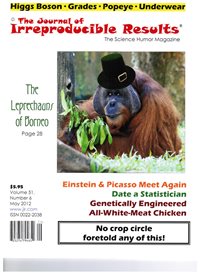
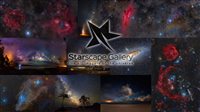
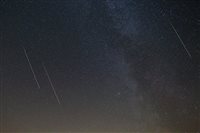


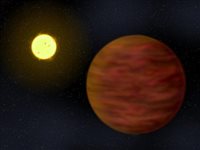

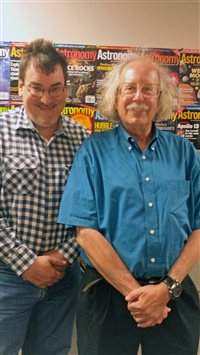































No comments:
Post a Comment
Please leave a comment-- or suggestions, particularly of topics and places you'd like to see covered